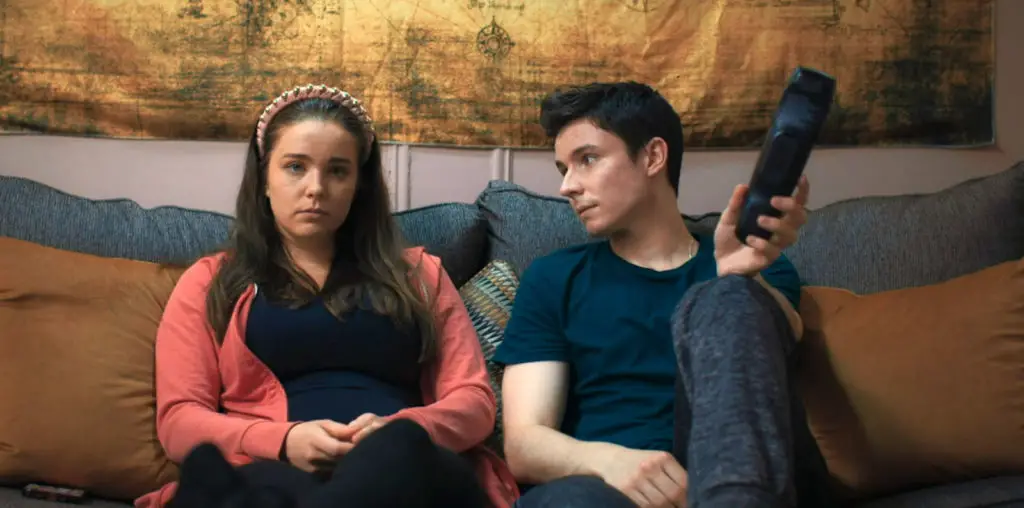
With recent films such as “The Tracker” and “Rabbit-Proof Fence,” the big screen has acted as a stage for Australia’s collective conscience. Similar to America’s dilemma over the native Indians, White Australia grapples with its recent history of disharmony with the Aboriginal indigenous people in both reality and in film. The story behind this is a long one and is yet to be resolved; even Australia’s current prime minister refuses to clean out the skeletons from the closet and say ‘sorry’ in the spirit of reconciliation. Within the filmmaking arena however, there is much ‘apologizing’ going on; cultural therapy you may like to call it. Phillip Noyce (“The Saint”, “Patriot Games”) for one, returned to Australia to direct his first local production in over a decade with the emotional “Rabbit-Proof Fence.” In it, he tells the true story of three young girls from The Stolen Generation; a name attributed to the Aboriginal children taken away from their families to be assimilated into white culture in the 1950s. The children of “Rabbit-Proof Fence” are some of the few who escaped and made the long, arduous trek home to be with their families, and their ‘adventure’ forms the crux of this film. On the other hand, “The Tracker” delves further into Australia’s history to 1922. Three white men and one black Tracker are traversing outback mountain ranges in search of another Aboriginal man accused of raping and killing a white woman. The accused is yet to be judged by a jury, but it is evident from the attitude of The Fanatic leading the group that once caught, he will be slain for his supposed crime.
Essentially, “The Tracker” is a simple morality tale (fictional but based on cultural truths of the time) that has been pared back to the bare narrative bones; almost fable-like in its telling. The film’s characters are not afforded names; instead they are referred to by their personality types – The Fanatic (Gary Sweet), The Follower (Damon Gameau), The Veteran (Grant Page) and The Tracker (David Gulpilil). Each one is introduced by an on-screen explanatory note at the beginning of the film which indicates their role within the narrative as a kind of nameless stereotype from the Australian society of that era. With slow deliberation, De Heer’s film unfolds: Long shots (in style and duration) and only a smattering of dialogue present both the physical landscape through which they are travelling and the relationship that exists between the four men. In particular, the mystery of The Tracker is maintained by his unwillingness to say ‘too much’. Gulpilil’s depiction of The Tracker is to respond like an obedient, and essentially stupid, lapdog to his boss, The Fanatic, but there is something else at work behind those soul-searching eyes. Never has such a charismatic face as Gulpilil’s been committed to the screen. His Tracker is constantly surprising and intriguing, accounting for the numerous slow zooms into his face that De Heer seems compelled to include. As one of Australia’s leading Aboriginal actors, Gulpilil is far from being a household name, but is best-known to an international audience through his roles in “Walkabout” (Nicolas Roeg, 1971), “Storm Boy” (Henri Saffran, 1977) and now the aforementioned “Rabbit-Proof Fence” (Phillip Noyce 2002). The Tracker is by far his best role to date.
Graham Tardiff’s music (with lyrics written by De Heer) propels the narrative more effectively than any dialogue could, in a manner similar to Neil Young’s evocative score in Jarmusch’s “Dead Man”. Aboriginal singer/song-writer Archie Roach vocalises the score to profound effect. In another unconventional move, De Heer chooses to depict any violence in the movie through paintings rather than live action; a choice that has been a point of contention amongst many viewing the film. While this may seem a soft option, the inclusion of these paintings serves a two-fold purpose – to tell a strong story without resorting to sensationalism, and to tell a strong story using a traditional Aboriginal story-telling method. Regardless, De Heer’s decision to move away from a film heavy in dialogue has been almost unanimously considered a clever one. When he does resort to a lengthy monologue (in one of The Fanatic’s pivotal scenes), the result is clunky and inconsistent. If any character in “The Tracker” is flawed, it is the character of The Fanatic, whether labored by unsuitable dialogue or awkwardness in Gary Sweet’s performance. As the resident ‘baddy’ of the film, The Fanatic is less than thrilling and unfortunately often falls into hammy cliché. But, this is the one major failing of De Heer’s “The Tracker”. Otherwise, the film is a stunning piece of visual poetry that will, hopefully, be remembered as one of the most important stories to be told in Australia’s film history.
